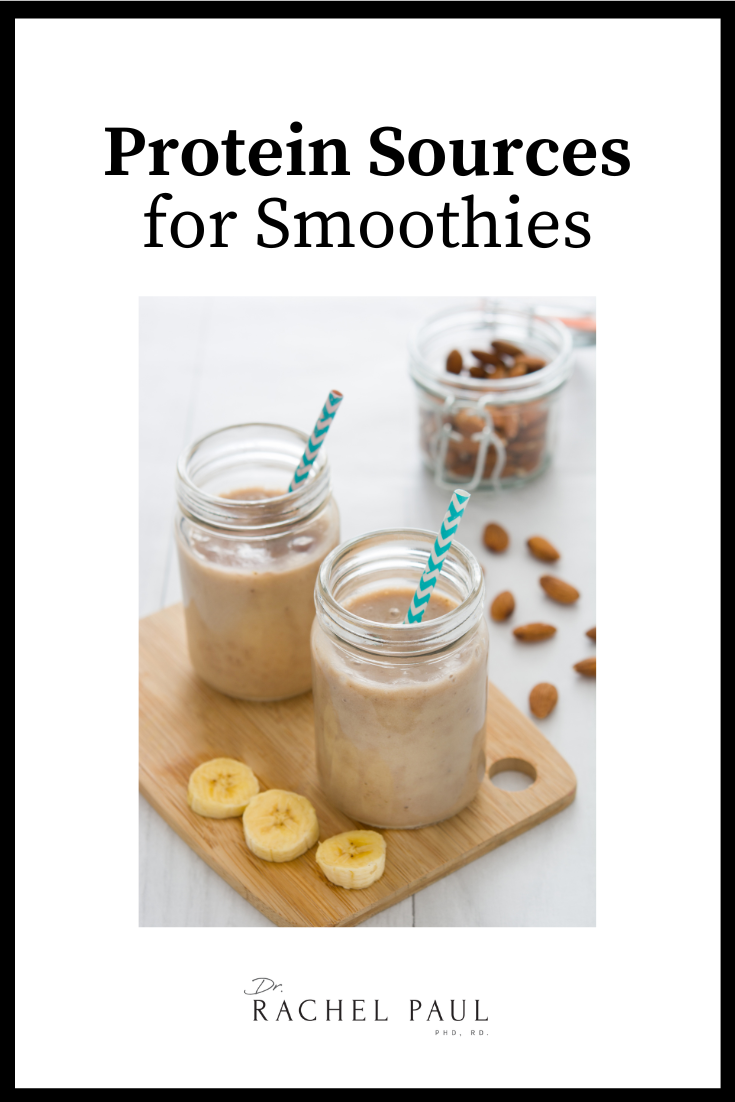
When you’re wanting to lead a more healthier lifestyle, smoothies are definitely a treat you’ll want to keep in your repertoire. They are a filling, delicious, and convenient way to incorporate more fruits and vegetables to your daily diet for children and adults alike. Many people opt to grab a smoothie as a light breakfast, just because or as a post workout snack. Plus, you can conveniently order them at drive-thru smoothie shops making it even easier to get your hands on this healthy treat.
There are a lot of different directions you can go with smoothies. You can add different ingredients to make your smoothies more interesting and nutritious. You can lean towards making them fruity and sweeter, more vegetable-centered if you know you need to incorporate more vegetables into your diet or even more protein based. Using protein powder is one of the common ways of increasing protein content of smoothies, but not everyone is a fan of protein powders.
So today, I’m sharing a round-up of ingredients that make great protein sources for smoothies and why you’ll want to incorporate them into your next smoothie recipe.
10 Protein Sources For Smoothies
If you’re wondering are fruit smoothies healthy, they certainly can be! Especially when you add any of these protein sources to your dish.
Cow’s milk
Cow’s milk is probably the number one choice when it comes to incorporating a protein source into a smoothie that blends well. Using cow’s milk as a base for your smoothie adds creaminess and enhances the flavor with nutrition.
Cow’s milk contains about 8 grams of protein per cup. There’s also about 12 grams of carbs and 8 grams of fat, which help give the smoothy a creamy texture. Cow’s milk is great to add to just about any smoothie. Try it with strawberry banana or a berry blend to enhance the overall taste of your drink.
Peanut butter
Have you ever tried a peanut butter banana smoothie?! Yum. With just 4 simple ingredients: peanut butter, frozen banana, vanilla extract, and a natural sweetener like honey or agave, you’ve got one of the most delicious and classic protein-enriched smoothie recipes.
Peanut butter is an easy way to add protein to your smoothie. This nut butter contains an impressive 65 grams of protein per cup! So you won’t need much when making a smoothie, about ¼ cup should be more than enough.
Almond butter
What makes almond butter a good choice is that it is a safe alternative for those with a peanut allergy or those who just prefer another nut butter alternative. Much like peanut butter, almond butter is a nice thickener for smoothies and adds a nutty bite (and a solid amount of healthy fats and protein to enjoy).
Not too far behind peanut butter, almond butter contains 52 grams of protein per cup. For smoothies, you’ll only need about ¼ cup because it’s so thick, but obviously the more you add protein to smoothies, the merrier!
I like to add almond butter to my lemon ginger spinach smoothie. You can also add it to any recipes that call for bananas or berries like strawberry almond butter or blueberry almond butter smoothie, which is usually almond butter, almond milk, chia seeds, and your choice of fruit.
Cottage cheese
Cottage cheese is another protein source that pairs well with fruit smoothies or the healthier vegetable or breakfast smoothie blends. It’s packed with over 24 grams of protein per cup, and is low in fat and carbs, making it a great choice when you want to add protein to smoothies.
Adding cottage cheese to your smoothies is a great way to create a creamy texture and make it a high protein smoothie.
If you’re trying a cottage cheese smoothie, you’ve got to try it with almond milk, frozen raspberries, bananas, and honey!
Hemp seeds
Hemp seeds are another easy way to add protein to your smoothie. They are a complete source of protein (meaning they have all nine essential amino acids) and contain 36 grams of protein in 100 grams of hemp seeds.
Hemp seeds taste pretty mild in flavor and slightly nutty, but they won’t change the flavor profile which makes them great to add to almost any smoothie recipe.
Silken tofu
Silken tofu is probably a protein source you wouldn’t think about incorporating, but here’s one reason why you’ll want to give silken tofu a try: Silken tofu will do just what the name suggests, make your smoothies silky and creamy.
And if you’re worried about the taste, there’s no need to fret. Silken tofu tastes just like whatever fruit you use. So when you want a protein rich smoothie using silken tofu, you’ve got to try it with frozen cherries (or berries), banana, and honey.
100 grams of silken tofu yields about 6 grams of protein.
Chia seeds
Chia seeds are another easy way to add protein to your smoothie, especially when you’re seeking some healthy fats. These gray sprinkle-like seeds are perfect to add to almost any smoothie recipe since they are very mild and won’t change the flavor profile, making them perfect for sweet or savory smoothies.
100 grams of chia seeds contains about 17 grams of protein. Unlike most plant foods, chia seeds contain all nine amino acids, and they’re high in fiber, helping you meet dietary requirements with ease.
Soy milk
Soy milk has a mild, yet beanie flavor which is very noticeable when you drink it plain, however, in smoothies, soy milk is a milder, more neutral note that can be overpowered when you add fruit, veggies, and other additives which have a stronger taste.
For every cup of soy milk, there’s 7 grams of protein, 4 grams of carbs, 4 grams of fat, and 2 grams of fiber – making it a super option for added nutrients.
Use soy milk in your triple berry smoothie, oats and apple smoothie, or a green smoothie with fresh kale and spinach.
Plain Greek yogurt
Just like milk protein, adding plain Greek yogurt to your smoothie adds healthy fat and creates a silky, smooth, and creamy texture. Plain Greek yogurt contains an impressive 23 grams of protein per cup. Add this creamy protein to any smoothie you desire since it has a neutral taste!
Collagen protein powder
As you can see, it’s so easy to add protein to smoothies using plant based protein or animal sources. However, since we’ve talked about smoothies without protein powder, it’s time to talk about adding protein to your smoothie WITH protein powder. It’s really all so easy to do. The options are endless and you won’t need much, about ¼ cup should be more than enough. Some of my favorite protein powders to add to smoothies are collagen protein powder. Collagen powder usually contains about 20 grams of protein per serving. For smoothies, you can do a cafe’ mocha collagen protein smoothie or a pineapple kale smoothie – both options are de-lish!
Protein can be tricky to add to your diet if you’re not paying attention, but smoothies make it super easy! See what does 100 grams of protein look like when it’s not in a smoothie.












